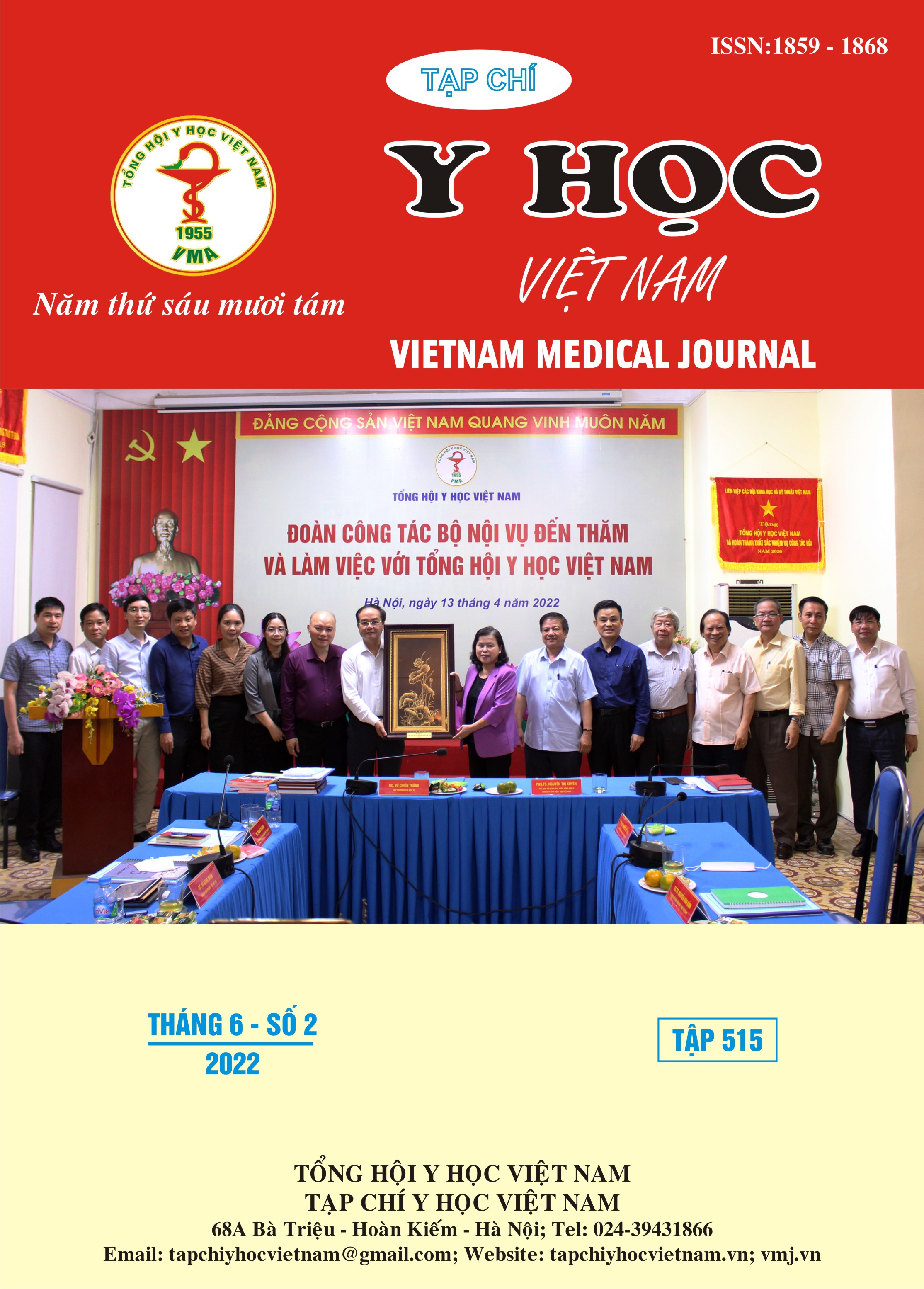CHANGES ON LATERAL CEPHALOMETRIC RADIOGRAPHS OF HARD AND SOFT TISSUE FOLLOWING CORRECTION OF BIMAXILLARY PROTRUSION WITH ANTERIOR SEGMENTAL OSTEOTOMY (ASO)
Main Article Content
Abstract
Objectives: evaluate the change on lateral cephalometric radiographs of hard and soft tissues following correction of bimaxillary protrusion with ASO. Material and methods: A case series study is performed on pre-operative and postoperative lateral cephalometric radiographs of 21 patients with bimaxillary protrusion (21 female, 0 male) who underwent anterior segmental osteotomy on the maxilla and mandible. The study describes the change of measurements and landmark’s position on 21 pairs of lateral cephalometric radiographs taken right before and at least 6 months after surgery. Results: Comparison of lateral cephalometric radiographs before and after surgery showed: SNA, SNB angles decreased on average 3,8° and 2,8°, respectively. The inclination angle of the maxillary incisor (I/MxP) and the lower incisor (IMPA) decreased by an average of 23,1° and 9,5°, respectively. The interincisor angle (IIA) increased on average of 14°. Protrusion of maxillary incisors (1u-NA) and mandibular (1l-NB) decreased on average by 1,3mm and 0,8mm, overbite decreased by 0,5 mm, overjet change was not statistically significant. Nasolabial angle and Z angle increased on average by 16,5° and 8,1°, respectively, N'SnPog' angle had no statistically significant change. Upper lip and lower lip protrusion (distance to E line) decreased by 1,8 mm and 3,6 mm, respectively. The hard tissue landmarks ANS, Is, Ii retracted on average on the X-axis by 6,74; 8,04 and 6,70mm, respectively. The soft tissue landmarks Prn, Cm, Sn, Ls, Li retracted on the X axis on average by 2,27; 2,77; 3,58; 6,25 and 7,15mm. Both soft and hard tissue landmarks do not have a statistically significant distance change on the Y axis. The soft-to-hard-tissue ratio in the maxilla and mandible in our study was 77% and 105%, respectively. Conclusion: ASO is an effective treatment method in bimaxillary protrusion cases.
Article Details
Keywords
Bimaxillary protrusion, anterior segmental osteotomy, lateral cephalometric
References
2. Lee J.K., Chung K.R. and Baek S.H. (2007), Treatment outcomes of orthodontic treatment, corticotomy-assisted orthodontic treatment, and anterior segmental osteotomy for bimaxillary dentoalveolar protrusion. Plast Reconstr Surg. 120(4), 1027-1036.
3. Kim J.R., Son W.S. and Lee S.G. (2002), A retrospective analysis of 20 surgically corrected bimaxillary protrusion patients. Int J Adult Orthodon Orthognath Surg. 17(1), 23-27.
4. Nadkarni P.G. (1986), Soft tissue profile changes associated with orthognathic surgery for bimaxillary protrusion. J Oral Maxillofac Surg. 44(11), 851-854.
5. Nguyễn Tài Sơn và Lê Tấn Hùng (2017), Đánh giá những thay đổi ở mô mềm và mô cứng sau thủ thuật cắt phân đoạn phía trước xương hàm trên và hàm dưới. Tạp chí Y Dược lâm sàng 108. 12(2), 70-75.
6. Phạm Như Hải (2015), Nghiên cứu bước đầu điều trị phẫu thuật chữa vẩu xương ổ răng 2 hàm bằng mở xương ổ dưới chóp chân răng tại Bệnh viện Việt Nam Cu Ba, Hà Nội. Y học Việt Nam (1), 75-79.
7. Park J.U. and Hwang Y.S. (2008), Evaluation of the soft and hard tissue changes after anterior segmental osteotomy on the maxilla and mandible. J Oral Maxillofac Surg. 66(1), 98-103.
8. Okudaira M., Kawamoto T., Ono T., et al. (2008), Soft-tissue changes in association with anterior maxillary osteotomy: a pilot study. Oral Maxillofac Surg. 12(3), 131-138.


